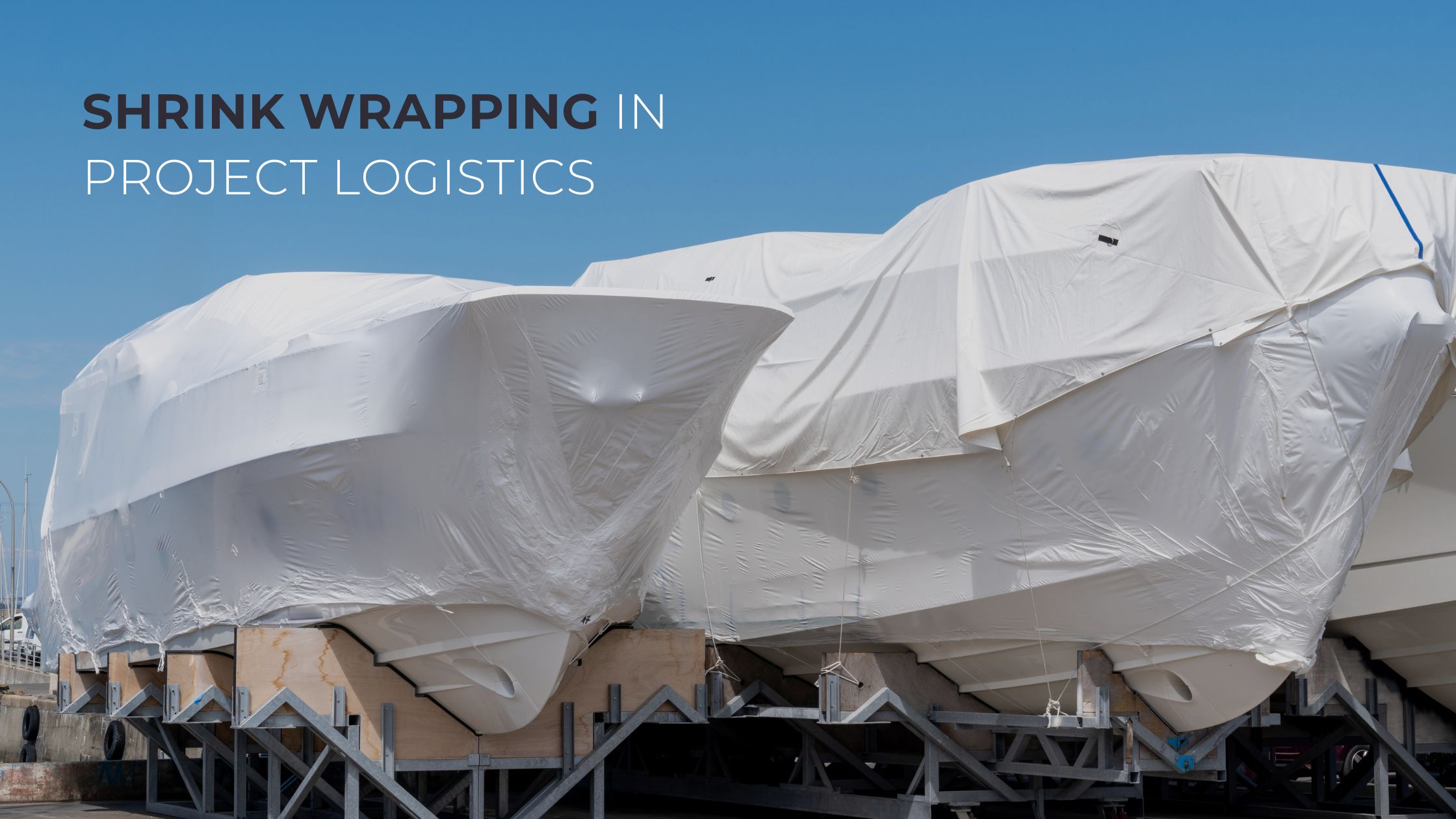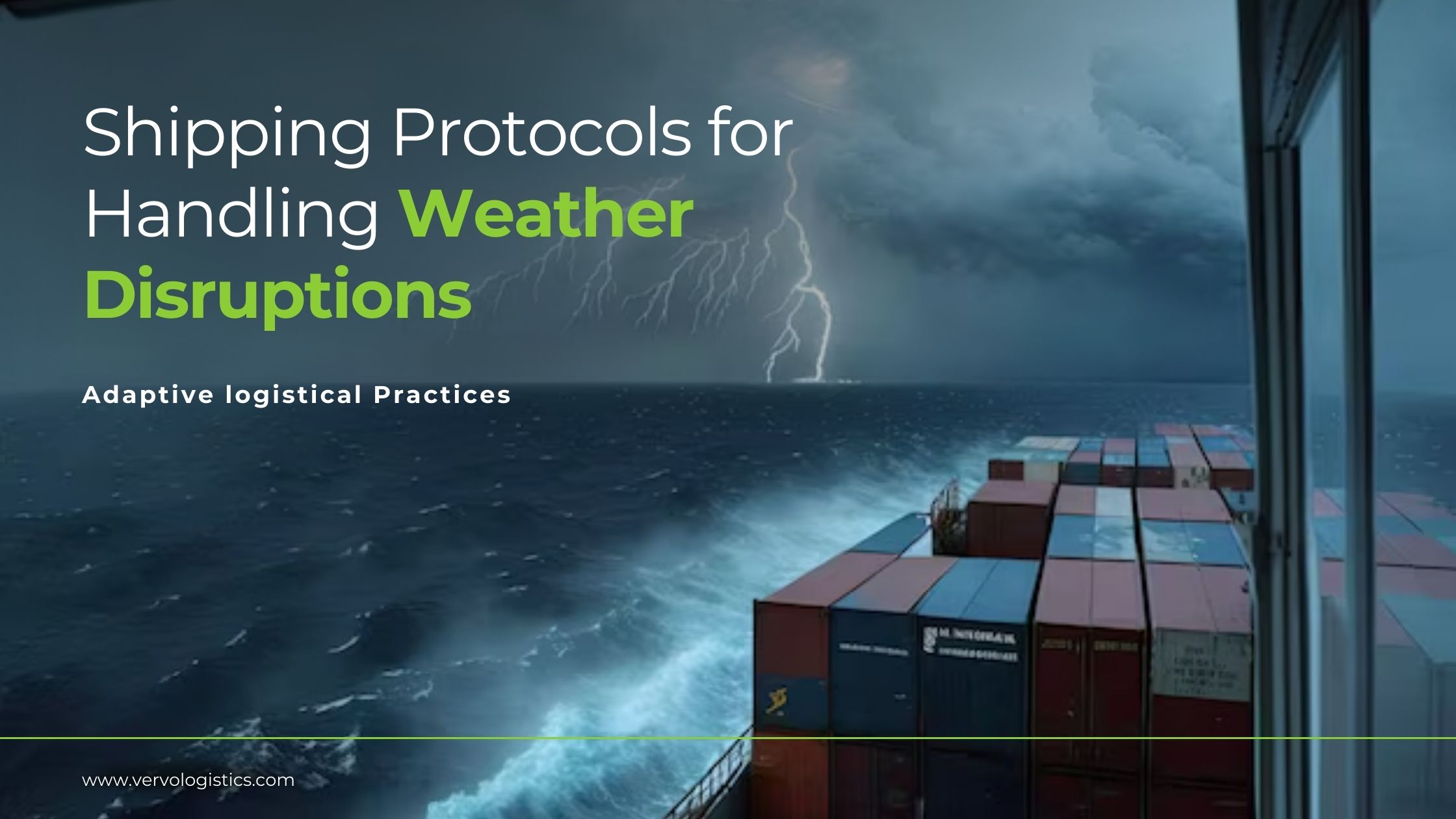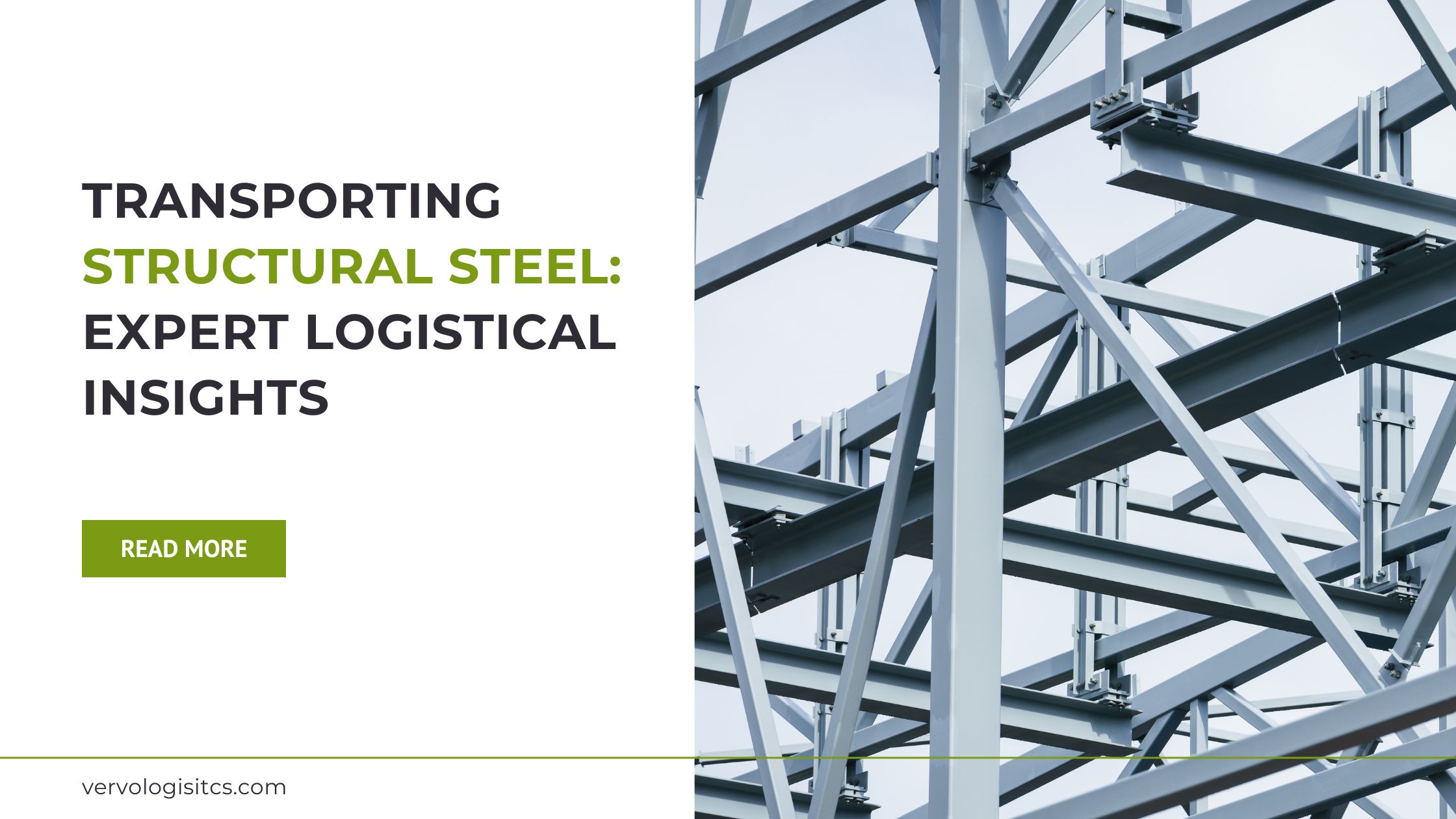In project logistics, the stakes are high! For some out-of-gauge and heavy-lift cargo, the delivered objects should arrive brand new and without a hitch to preserve their value. That is why we apply shrink-wrapping to provide a tailor-made protective coating.
From preparation to execution, Vervo Middle East’s logistics team delved with us into the shrink-wrapping process. Let’s see how it works:
Shrink Wrapping For Heavy Lift and Out-of-Gauge Cargo
We use shrink wrapping as a packing technique in project logistics to ensure heavy or oversized cargo arrives brand new without a hitch, preserving its value.
Shrink wrapping entails enveloping bulky items in a layer of polymer plastic film, which is then heated, causing it to contract tightly around the object.
The primary purpose of shrink wrapping is to provide a robust protective barrier against environmental elements, including moisture, dust, and UV radiation. It can even offer a degree of unitization, keeping multiple components together.
Shrink wrapping offers a slew of advantages, especially for oversized and irregularly shaped items such as boats, helicopters, and heavy machinery. How?
✅It delivers a tailor-made protective shield as it can be tailored to fit irregular shapes.
✅The thick, puncture-resistant packing material is highly impermeable and highly durable.
✅The visibility of the wrapped item is maintained, allowing for easier inspections without unpacking and reducing the risk of cargo tampering.
✅The packing material is also lightweight, adding minimal weight to the overall cargo and thus optimizing fuel efficiency in transportation.
Preparing Cargo for Shrink Wrapping
To ensure that the advantages of shrink wrapping are fully realized, careful preparation of the cargo before the application of the wrap is essential.
- Cargo Inspection: The preparation phase begins with a thorough cargo inspection to identify any pre-existing damage, vulnerabilities, or special requirements of the cargo. This informs the appropriate wrapping technique, for example, by identifying any areas that may require additional protection or padding to prevent punctures or tears in the wrap. Items with sharp edges or protrusions need to be noted and addressed.
- Surface Preparation: The next step involves preparing the surface of the cargo to ensure the wrap adheres properly and provides a protective coating. Surfaces should be clean, dry, and free from debris, moisture, or oily residues. This is to prevent mold or mildew growth under the wrap and to avoid trapping any particles that could scratch or damage the item. Any sensitive parts of the cargo that may be affected by heat during the shrink-wrapping process should also be identified and shielded accordingly. Sharp edges or protruding parts of the cargo may require additional padding or protection to prevent the shrink wrap from tearing.
- Support Structures: For certain types of cargo, especially those with large flat surfaces or odd shapes, internal or external support structures may be necessary before wrapping. These structures, which can be made from various materials such as wood, metal, or sturdy plastic, are designed to maintain the cargo's shape and provide a scaffold for the shrink wrap to cling to. They help prevent water pools or snow accumulation, which could lead to structural failure of the wrap. They also aid in creating an air pocket around the cargo for additional insulation. Additionally, this preserves the structural integrity of the cargo, ensuring that the shrink wrap does not sag or apply uneven pressure, which could potentially cause damage.
The Shrink-Wrapping Process in Project Logistics
The shrink-wrapping process for heavy and out-of-gauge (OOG) cargo involves meticulous material selection, precise application techniques, and effective sealing and shrinking.
- Material Selection:
Materials commonly used for heavy and OOG cargo are typically made of polyethylene, with varying thicknesses ranging from 6 to 12 mils, depending on the size and durability required for the cargo. It is a common choice due to its strength, durability, and resistance to tears and punctures, withstanding the rigors of transport and exposure to harsh environmental conditions.
UV inhibitors or UV-resistant shrink wrap are often included to prevent the breakdown of the wrap from prolonged exposure to sunlight and degradation of the wrap during transport, adding resilience. Some materials may have corrosion-inhibiting properties to protect metal components.
- Application Techniques: Applying shrink wrap is a sequential or systematic process that involves:
1️⃣ Measuring and cutting the wrap to fit the cargo, with enough excess to cover the entire cargo which means enough allowance for overlap at the seams so it creates a tight seal.
2️⃣ Then comes the positioning. Starting from the top, the wrap is draped over the cargo and support structures, ensuring that it extends to the base on all sides.
3️⃣ Afterwards, the edges of the wrap are anchored and folded using strapping, adhesive tape, or heat-sealed seams to keep the wrap in place during the shrinking process.
- Sealing and Shrinking:
The sealing process involves joining the edges of the shrink wrap using a heat gun or a propane-fired heat tool, which melts the edges together. The goal is to connect panels of shrink wrap to create a single, continuous sheet. This creates a tight seal that encloses the cargo completely.
Once sealed, the shrinking process begins. The heat gun is methodically moved over the surface of the shrink wrap, ensuring even heat distribution and paying particular attention to the edges and seams.
The heat causes the wrap to contract tightly around the cargo, conforming to its shape and ensuring that there are no loose areas that could flap or tear during transport.
The heat must be applied evenly to avoid overheating, which can cause holes or weak spots in the wrap, while underheating can result in a loose fit. The goal is a drum-tight finish that is smooth and wrinkle-free, signifying that the wrap is secured evenly around the cargo.
Shrink Wrapping Services in the UAE and Beyond
In wrapping up, shrink wrapping is just one facet of our comprehensive project logistics capabilities designed to transport your heavy-lift and OOG items with the utmost care.
Vervo Middle East moves your heavy load to the UAE and over 120 countries while taking care of everything from A to Z, including the meticulous shrink-wrapping process! Our team of seasoned logistics experts proficiently addresses the unique challenges of securing various project cargoes.
At Vervo Middle East, we harness advanced techniques and industry-leading expertise to ensure your cargo arrives in pristine condition and without a hitch, whether within the United Arab Emirates or across the global stage.
Take a look at our project cargo services in the UAE and request your FREE heavy-lift cargo quote today!
☎ +971508723352
📧




